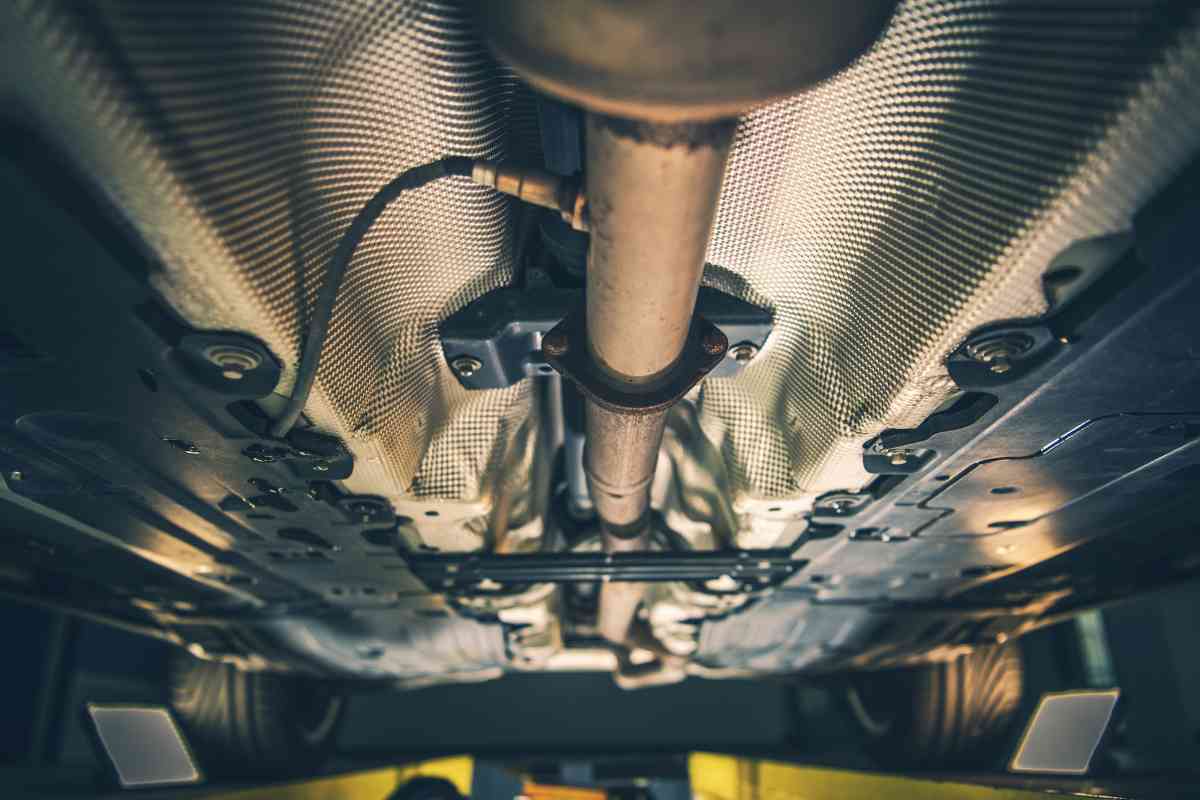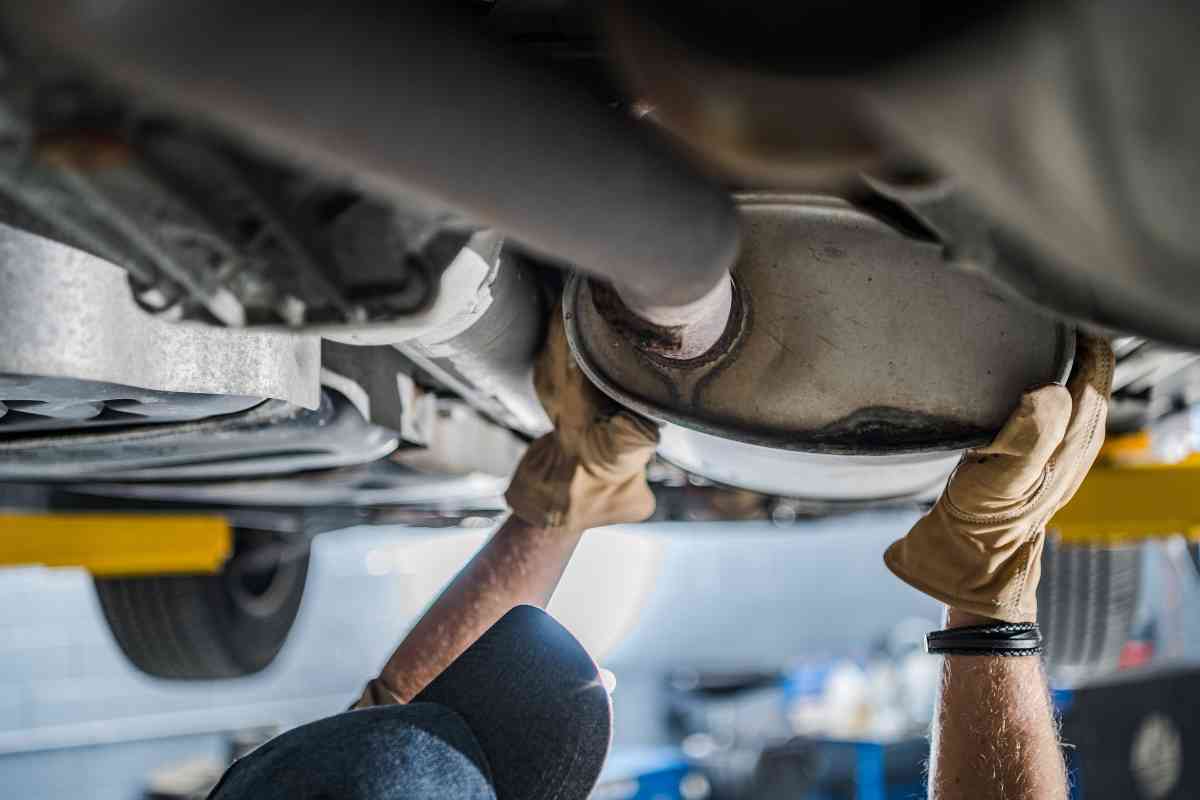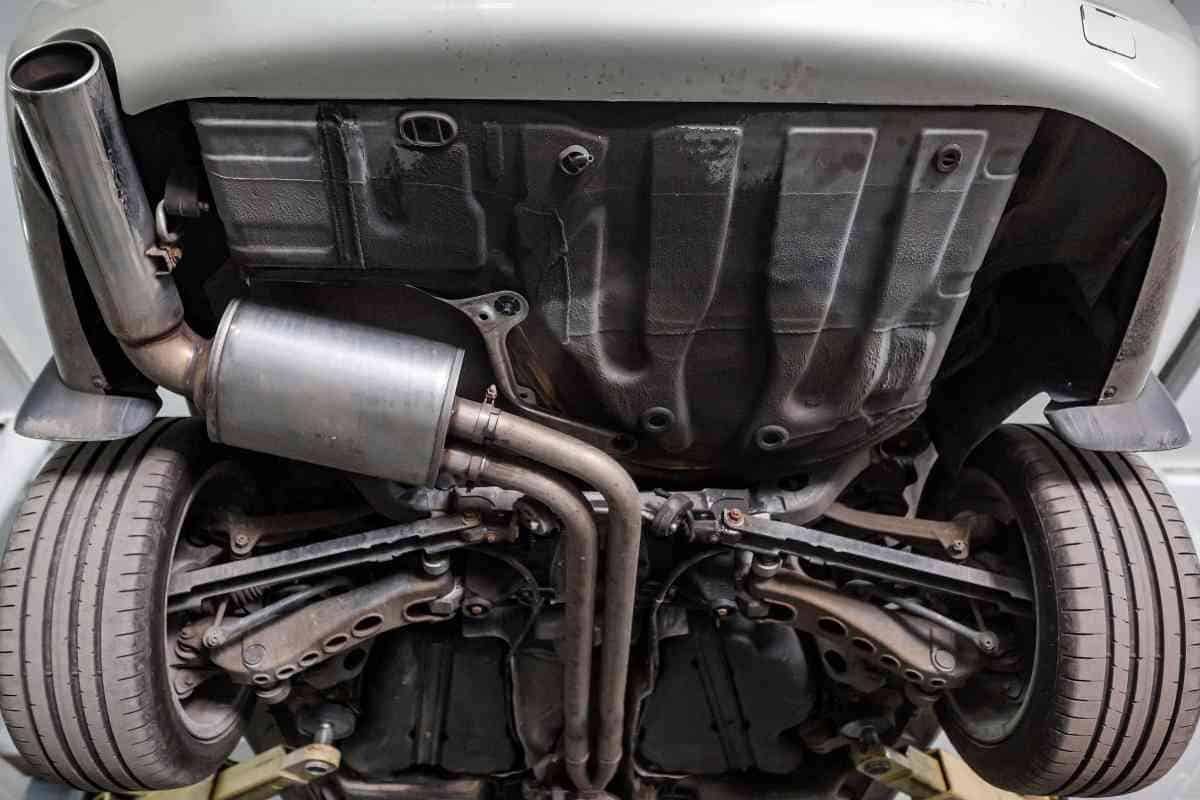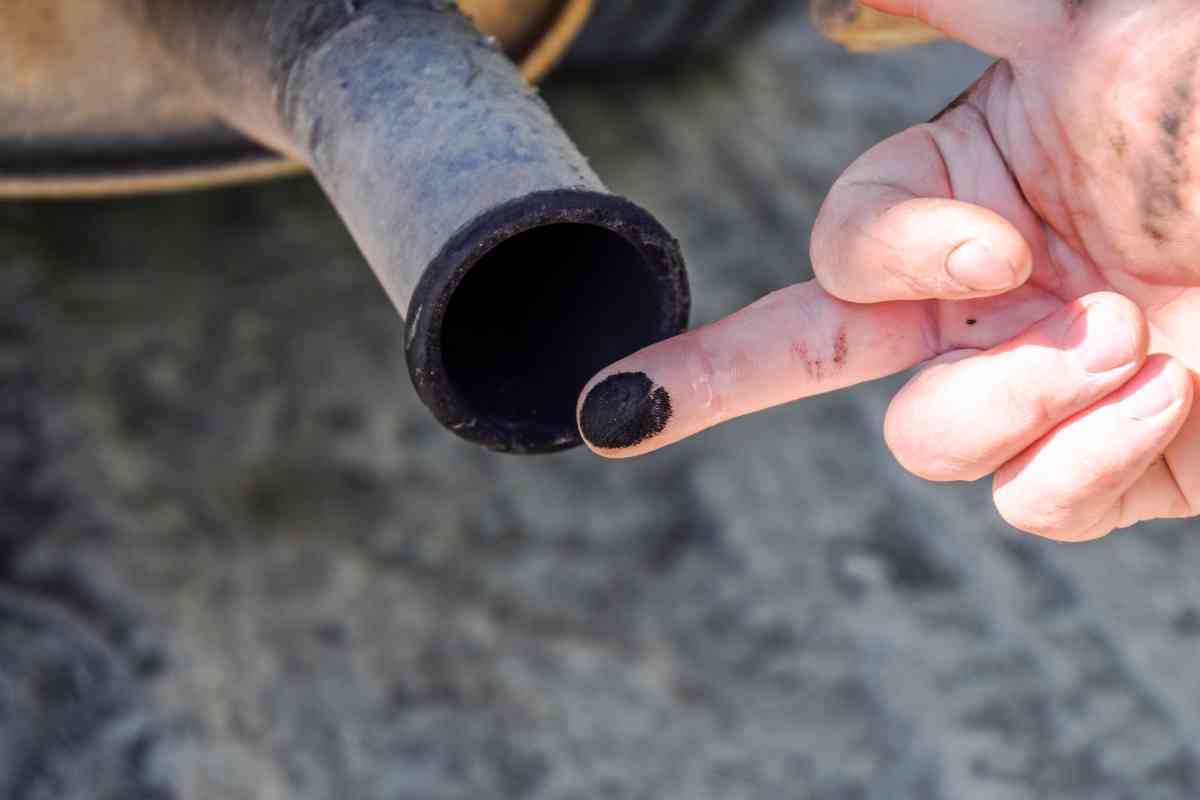The Guide to Car Exhaust Systems: Unraveling the Mysteries and Spotting Trouble Signs
Getting acquainted with your car’s exhaust system transcends mere automotive jargon; it’s about understanding a crucial element that ensures your ride’s smooth and efficient performance. While the engine captures most of our attention, the activities beneath the chassis—specifically, the exhaust system—deserve equal spotlight. This system is key in routing noxious gases away from the engine and cabin, minimizing environmental impact, and preserving fuel economy.

Related Post! Understanding Transmission Systems
How Does A Car Exhaust System Work?
A car’s exhaust system channels harmful gases from the engine out of the vehicle, reducing environmental pollution and noise. It begins at the exhaust manifold, collects gases, then passes them through the catalytic converter to reduce toxins, and finally through the muffler to dampen noise, before exiting via the tailpipe.
Spotting early signs of exhaust issues, such as rattling noises, rust, or dwindling power and acceleration, can ward off expensive repairs and keep your vehicle eco-friendly. As diligent car owners, recognizing these hints and monitoring unusual sounds or fuel efficiency can shed light on the condition of your exhaust system, enabling timely interventions.
The ABCs of Car Exhaust Systems

Understanding the exhaust system’s components and their functions is vital for its upkeep and diagnosing problems. Let’s explore the building blocks and roles of this underappreciated system to ensure our vehicles remain in prime condition.
Key Components
- Exhaust Manifold: Clamped to the engine, it gathers exhaust gases into a single path.
- Oxygen Sensors: By assessing oxygen levels in the exhaust, they help fine-tune engine performance and lower emissions.
- Catalytic Converter: A chemical marvel that converts hazardous pollutants into harmless gases before they exit the car.
- Muffler: It keeps the exhaust system’s rumble to a minimum, ensuring your drive is both peaceful and lawful.
- Tailpipe: The endpoint for exhaust gases, efficiently steering them away from your vehicle and aiding in early problem detection.
Related Post! How Does Cold Weather Affect Car Engines?
System Functions
The exhaust system’s primary role is to safely escort toxic gases out of the cabin, safeguarding the air we breathe on the move. Beyond this, it significantly influences vehicle performance and fuel efficiency. Through the catalytic converter, it plays a pivotal role in environmental protection by transforming dangerous emissions into safer compounds. Moreover, the system’s finely balanced backpressure aids the engine’s efficiency and energy output, highlighting its unsung yet critical contribution to our driving experience.
Types of Exhaust Systems

Peering under the hood reveals the exhaust system as a pivotal factor in your car’s performance and its impact on the environment. Let’s unpack the varieties of exhaust systems we might encounter.
Stock Exhaust Systems
These are the default configurations fitted by the vehicle manufacturers, aimed at achieving a middle ground in noise suppression and emissions reduction. Essential elements typically include the catalytic converter for minimizing pollutants, the muffler for damping sound, and the tailpipes. Think of these systems as the versatile all-rounders—efficient, cost-effective, but not specialized.
Performance Exhaust Systems
In contrast, performance exhaust systems are engineered to boost your vehicle’s power and efficiency. They usually feature wider pipes, advanced mufflers, and sometimes lighter materials like stainless steel to decrease resistance and expedite gas expulsion. The result? Enhanced horsepower, torque, and a satisfyingly rich exhaust note. These systems are a hit among car enthusiasts and manufacturers alike, aiming to perfect the exhaust sound without tipping into excess noise.
Identifying Exhaust Issues
Certain symptoms can alert us to potential exhaust complications. Here’s what to watch for:

Noisy Exhaust
An optimally functioning exhaust system operates with a whisper, not a bang. Unusual sounds, such as rattling or booming, could suggest internal damage, like busted muffler baffles essential for sound moderation. Ignoring these noises is a no-go—they signal something’s off.
Declining Fuel Efficiency
A dip in gas mileage can often trace back to an underperforming exhaust system. A compromised exhaust forces the engine to work harder, guzzling more fuel in the process. Monitoring fuel consumption can clue you into exhaust issues among other potential problems.
Unpleasant Odors
Strange smells inside your car could point to exhaust troubles. A functional exhaust channels hazardous gases away from the cabin. If you catch a whiff of something foul, it’s crucial to act fast. Leaks in the exhaust system can introduce dangerous gases, like carbon monoxide, inside your vehicle, posing severe health risks.
Related Post! When To Replace Your Catalytic Converter

Maintenance Strategies
To ensure your exhaust system remains in top form, preventing expensive overhauls, here are a few maintenance essentials:
Regular Check-Ups
Yearly professional inspections can unveil early signs of wear and tear, such as rust, cracks, and deteriorating seals. Early detection means easier, cost-effective fixes.
Cleanliness Is Key
Beyond keeping your car looking its best, cleaning the exhaust system helps fend off rust and corrosion. A degreaser and a gentle cloth can keep the system in pristine condition, prolonging its lifespan.
Part Replacements
When a component of the exhaust shows signs of failure, prompt replacement is vital. For example, a malfunctioning oxygen sensor can wreak havoc on fuel economy. Opting for quality replacement parts can safeguard your vehicle’s efficiency and durability.
Heeding these tips not only maintains your exhaust system but also preserves your car’s performance and safety, ensuring a smoother, more enjoyable driving experience.
Troubleshooting Exhaust Issues
Facing exhaust issues demands prompt action to prevent escalating damage and costs. Properly diagnosing noises, addressing leaks, checking sensors, and considering performance enhancements are essential steps.
Diagnosing Sounds
Listening closely to your car’s exhaust can reveal much about its health. Rattling may suggest loose components, while new or loud sounds could indicate muffler damage. Recognizing the normal sound of your exhaust is crucial, as any deviation warrants an immediate check.
Addressing Exhaust Leaks
Symptoms like reduced fuel efficiency or a ticking noise upon ignition could signal an exhaust leak. Inspect for rust or holes, particularly at connection points prone to wear. Seals on the exhaust manifold should also be checked for degradation. Professional tools or welding may be necessary for repairs or replacements.
Sensor Checks
Sensors, especially the oxygen sensor, play a vital role in optimizing fuel efficiency. An increase in fuel consumption or an illuminated engine light could indicate it’s time for a sensor evaluation. These sensors are pivotal for maintaining efficiency and meeting emission standards.
Performance Enhancements

Optimizing your car’s performance might start with the exhaust system. Upgrades can significantly improve power output.
Upgrading Components
Installing components like a high-flow catalytic converter or aftermarket headers can reduce exhaust backpressure, enhancing engine performance. Performance-grade mufflers not only improve horsepower but also deliver a richer exhaust note.
Related Post! Do After-Market Exhausts Damage Your Engine?
High-Performance Options
Full exhaust system upgrades, including wider pipes, foster improved gas flow, akin to enhancing your car’s respiratory system for better power delivery and efficiency.
Environmental Considerations
Understanding the exhaust system’s environmental impact is crucial. Emissions regulations aim to reduce pollution, with the catalytic converter playing a central role in transforming harmful gases into less harmful substances. Maintaining these systems is key to reducing your vehicle’s environmental footprint.
DIY vs Professional Help
Deciding between a DIY approach and professional assistance depends on the issue’s complexity, your mechanical expertise, and available tools.
When to DIY
- Simple Inspections: Routine checks for rust and general wear can often be DIY tasks.
- Minor Repairs: Basic repairs like replacing clamps or hangers are manageable with the right tools and some DIY confidence.
Finding a Trusted Mechanic
- Complex Issues: Professional skills are advisable for serious problems requiring specialized equipment or welding.
- Regular Maintenance: Mechanics can perform comprehensive inspections and repairs that might be beyond the average DIYer’s scope.
Building a relationship with a trusted mechanic can provide both expert care for complex issues and peace of mind, ensuring your car’s exhaust system operates efficiently and cleanly. Whether tackling minor fixes yourself or seeking professional help, understanding your exhaust system’s function and maintenance needs is key to a well-running vehicle and a healthier environment.
